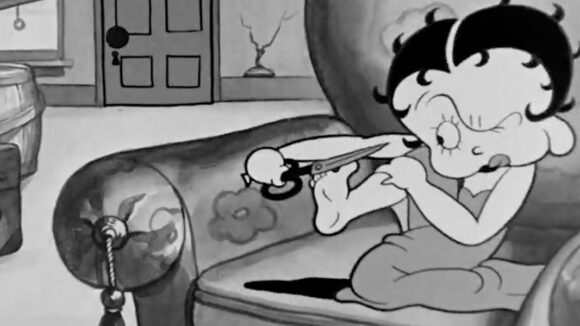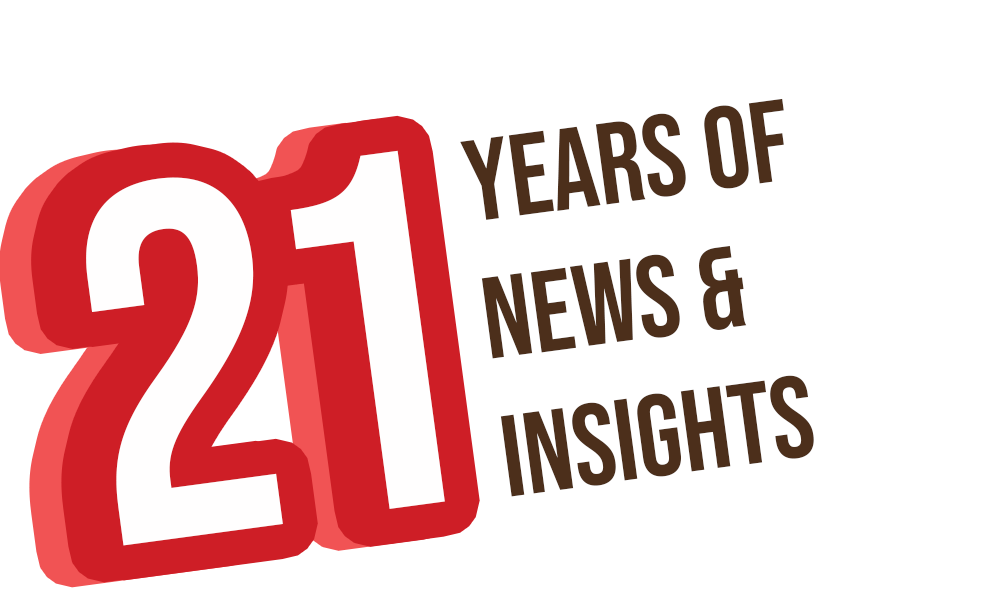

Here Are Some Of Betty Boop’s Greatest Moments
The Tony Awards, honoring Broadway stage productions, are being held tonight, and Boop! The Musical is nominated for three Tonys, including a nod for Jasmine Amy Rogers for her starring role as the iconic black-and-white cartoon star Betty Boop.
Betty Boop remains an instantly recognizable icon 95 years after she was first drawn, but the cartoons that made her a star aren’t as widely seen as they should be. People who think of Betty as a cute Hello Kitty-style character might be surprised by the surrealist insanity of the original films, which are peppered up by red-hot jazz soundtracks and gorgeously weird rubber hose animation by greats like Willard Bowsky, Seymour Kneitel, and Berny Wolf.
So today, in honor of the musical’s Tony nominations, we’re taking a look at the wildest and funniest cartoons in Betty Boop’s storied career, as well as hearing from the musical’s star Rogers, who reveals her favorite classic Betty Boop cartoon.
Let’s start with one of Betty’s finest films, The Old Man of the Mountain (1933), in which Betty encounters a bearded old pervert voiced by jazz legend Cab Calloway.
— Cartoon Study (@CartoonStudy) June 8, 2025
One thing you may not know about Betty is that when she first appeared in 1930’s Dizzy Dishes, she was a dog. She was introduced as a love interest for Bimbo, the canine star of the Talkartoons series, and she quickly stole the show and scored her own self-titled series.
Betty was designed and animated in her maiden voyage by the great Grim Natwick, who became proficient at drawing female characters after studying figure drawing at the Academy of Fine Arts in Vienna (the same school, incidentally, that rejected Adolf Hitler). Despite Natwick’s talent for feminine beauty, which later earned him a gig animating the character of Snow White at Disney, his initial animation of Betty here is wonderfully, gloriously grotesque.
— Cartoon Study (@CartoonStudy) June 8, 2025
In 1931, Betty traded her dog ears for hoop earrings and became a human, although her boyfriend Bimbo remained a dog (which may sound odd, but in the topsy-turvy world of the Fleischer cartoons, that’s hardly even worth noting). Mask-a-Raid (1931), one of Betty’s first human appearances, is an unsung masterpiece in a series with no shortage of them, assaulting the audience with a continuous onslaught of weird sight gags before erupting into an out-of-nowhere scat session at the end. The lovely restoration here and on several other clips in this piece come courtesy of Fleischer Cartoons.
— Cartoon Study (@CartoonStudy) June 8, 2025
Betty’s origin story gets passed around on the internet a lot, frequently with the details mixed up. For a basic overview of what inspired the character: singer Helen Kane became a sensation in the late 1920s for her baby voice and “boop-oop-a-doop” singing style, and her popularity started a trend of similar performers. Betty Boop was created as a caricature of Kane and other singers like her. Kane sued the Fleischer Studio in 1934 for ripping her off, but the Fleischers didn’t feel she had exclusive ownership of the boop-oop-a-doop schtick. Their legal team proved in court that an African-American child performer Esther Jones (known by her stage name Baby Esther) booped before Kane did, and Kane had attended her show at the Everglades Nite Club in New York. So Kane lost the case, and Betty was free to continue booping. Here’s a related scene from the Fleischer short Betty Boop’s Trial (1934).
— Cartoon Study (@CartoonStudy) June 8, 2025
One element that set Betty apart from other cartoon characters of the 1930s was her flirtatious personality. Most cartoon stars of the era were happy-go-lucky male characters with identical girlfriends, à la Mickey Mouse, but Betty’s winking sex appeal made her unique. Betty’s hoochie coochie dance in 1931’s Bimbo’s Initiation — in which Betty tries to recruit Bimbo into a cult (!!!) — is such a funny cartoon caricature of a seduction scene; the animators seem to be having a blast stretching Betty’s limbs around like taffy.
— Cartoon Study (@CartoonStudy) June 9, 2025
Despite being a sexy character, Betty is not just an object of lust. Unusual for the era, Betty is shown to be a career woman, working as an airplane pilot, race car driver, inventor, courtroom judge, or whatever the plot of a particular cartoon required. Betty is a dentist in Ha! Ha! Ha! (1934), which results in a standout climax where her laughing gas seeps out of the cartoon and spreads into the real world. It really speaks to the skillful draftsmanship of the Fleischer animators that they can smoothly transition photographs of cars and mailboxes into animated characters.
— Cartoon Study (@CartoonStudy) June 8, 2025
Betty Boop is even elected President of the United States in the 1932 short Betty Boop for President, where she not only ends the Great Depression and Prohibition, but also provides citizens with free jazz and chocolate ice cream (based on her plans for wealth distribution, she appears to be running as a socialist). This terrific short is actually one of the first works of fiction to depict a female president — earlier examples tend to be science-fiction stories set in an imagined future where all men have died of ‘Masculitis’ or such — but the film doesn’t treat Betty’s gender as a novelty, instead focusing on Betty’s whimsical Rube Goldberg solutions to real-world problems. Betty is doing an imitation of then-President Herbert Hoover in the clip below.
— Cartoon Study (@CartoonStudy) June 8, 2025
Key to Betty’s appeal is her distinctive voice. Several talented actresses provided Betty’s dulcet tones — Margie Hines, Ann Little, Bonnie Poe — but the primary Boop actress was Mae Questel, a vaudeville performer and impressionist who gave voice to many great characters, including Popeye’s sweetheart Olive Oyl. Contrary to standard practice, the voices in the Fleischer shorts were post-dubbed, meaning the actors would ad lib over completed films, giving the dialogue a refreshingly off-the-cuff feel. Questel’s improvisational skills added a lot to the Boop and Popeye shorts, as you can see in this clip from 1932’s Betty Boop’s Museum (Questel is doing all the female voices here).
— Cartoon Study (@CartoonStudy) June 8, 2025
The world of the Betty Boop cartoons is a delightful one to escape into. Characters are bouncing up and down at all times, everything is rubbery and malleable, and inanimate objects are constantly coming alive to add commentary or provide extra jokes. Supposedly, director Dave Fleischer had a rule that animators were supposed to add in a gag or bit of comic business to every shot, which leads to an almost dreamlike sense of transformative surrealism in films like Is My Palm Read (1933).
— Cartoon Study (@CartoonStudy) June 8, 2025
The free-flowing creativity in the Betty Boop shorts is like visual jazz, and that impression is aided by the swinging soundtracks. Fleischer Studios was located in New York City, not far from the Harlem jazz scene, and musical greats like Louis Armstrong and the Mills Brothers were occasionally brought in as celebrity guest stars to provide music for the films. I Heard (1933) features one of the all-time great cartoon scores, written and performed by Don Redman and His Orchestra.
— Cartoon Study (@CartoonStudy) June 8, 2025
The crown jewels of the Betty Boop series are the three cartoons the Fleischers made in collaboration with jazz mastermind Cab Calloway. In the macabre classic Minnie the Moocher (1932), the animators rotoscoped Calloway’s hypnotic dance moves onto the ghostly walrus, creating a truly unforgettable animated sequence. Watching this, you can see why Tim Burton and Danny Elfman have cited the Betty Boop cartoons as artistic influences.
— Cartoon Study (@CartoonStudy) June 8, 2025
The most celebrated of all Betty Boop shorts is Snow-White (1933), a decidedly more eccentric take on the fairy tale than the later Disney version. The film, which was preserved by the National Film Registry in 1994, was entirely animated by just one man: Roland Crandall. He was one of the first animators hired by the Fleischers in the early 1920s, and the film was given to him as a reward for his years of loyalty to the studio. I’ve watched this cartoon over and over, and its fevered imagination leaves me spellbound every time. I particularly love the Queen’s head turning into a frying pan because it’s just so beautifully pointless.
— Cartoon Study (@CartoonStudy) June 8, 2025
My personal favorite Betty cartoon is Betty Boop, M.D. (1932), in which Betty, Bimbo, and Ko-Ko sell a miracle drug called Jippo. Even by Fleischer standards, this one is stunningly demented, darting after any free association the animators can dream up and constantly contradicting itself (Jippo is a useless scam that does nothing in some scenes and a magic serum that can do absolutely anything in others). The randomly horrifying Mr. Hyde finale is, in my opinion, the most insane ending in cartoon history. By the way, that’s Billy Costello – the original voice of Popeye – scatting to the jazz standard “Nobody’s Sweetheart” on the soundtrack.
— Cartoon Study (@CartoonStudy) June 8, 2025
Poor Cinderella (1934) marked Betty’s only cartoon in color, and it’s a real beauty. The film was produced in two-strip Cinecolor, meaning all of the colors are variations of red or green, and the artists use this limited palette to classy effect. The film also makes great use of the Fleischers’ Stereoptical Process, in which the animation cels were filmed in front of a three-dimensional set that was moved around frame by frame on a wheel.
— Cartoon Study (@CartoonStudy) June 8, 2025
All good things must come to an end, and the Betty Boop series got its teeth yanked out by the Motion Picture Production Code, which was strictly enforced starting July 1st, 1934. The Code was particularly inflexible in terms of sexual content and innuendo, and chief censor Joseph Breen came down hard on poor Betty, feeling that her hip-swiveling was “suggestive of immorality.” And so Betty’s skirt was lengthened, Betty started going out with humans instead of dogs, and Betty began playing nursemaid to little kids and puppies rather than going on absurdist adventures. Red Hot Mamma (1934), in which Betty makes a cheery visit to the depths of Hell, was one of Miss Boop’s final appearances before the Code was enforced.
— Cartoon Study (@CartoonStudy) June 8, 2025
The Betty Boop series continued until 1939, and although the Post-Code entries aren’t as lively and interesting as the earlier films, there are occasional bright spots. The best shorts from this era are the ones featuring Prof. Grampy, an old man with a penchant for overcomplicated inventions (much like Max Fleischer himself, who was always tinkering with contraptions). Grampy left such an impression that he was included as one of the main characters in the new Betty Boop musical. Check out this new restoration from Fleischer Cartoons of Grampy’s debut short Betty Boop and Grampy (1935).
— Cartoon Study (@CartoonStudy) June 8, 2025
To wrap up this piece, I asked Broadway’s own Betty Boop — Jasmine Amy Rogers — if she had a favorite Betty Boop moment from the cartoons, and she picked this great toenail-clipping bit from Bimbo’s Express (1931). What are your favorite Betty Boop cartoons? Let us know in the comments below.
— Cartoon Study (@CartoonStudy) June 8, 2025
Restored clips from @fleischertoons via Instagram.

.png)